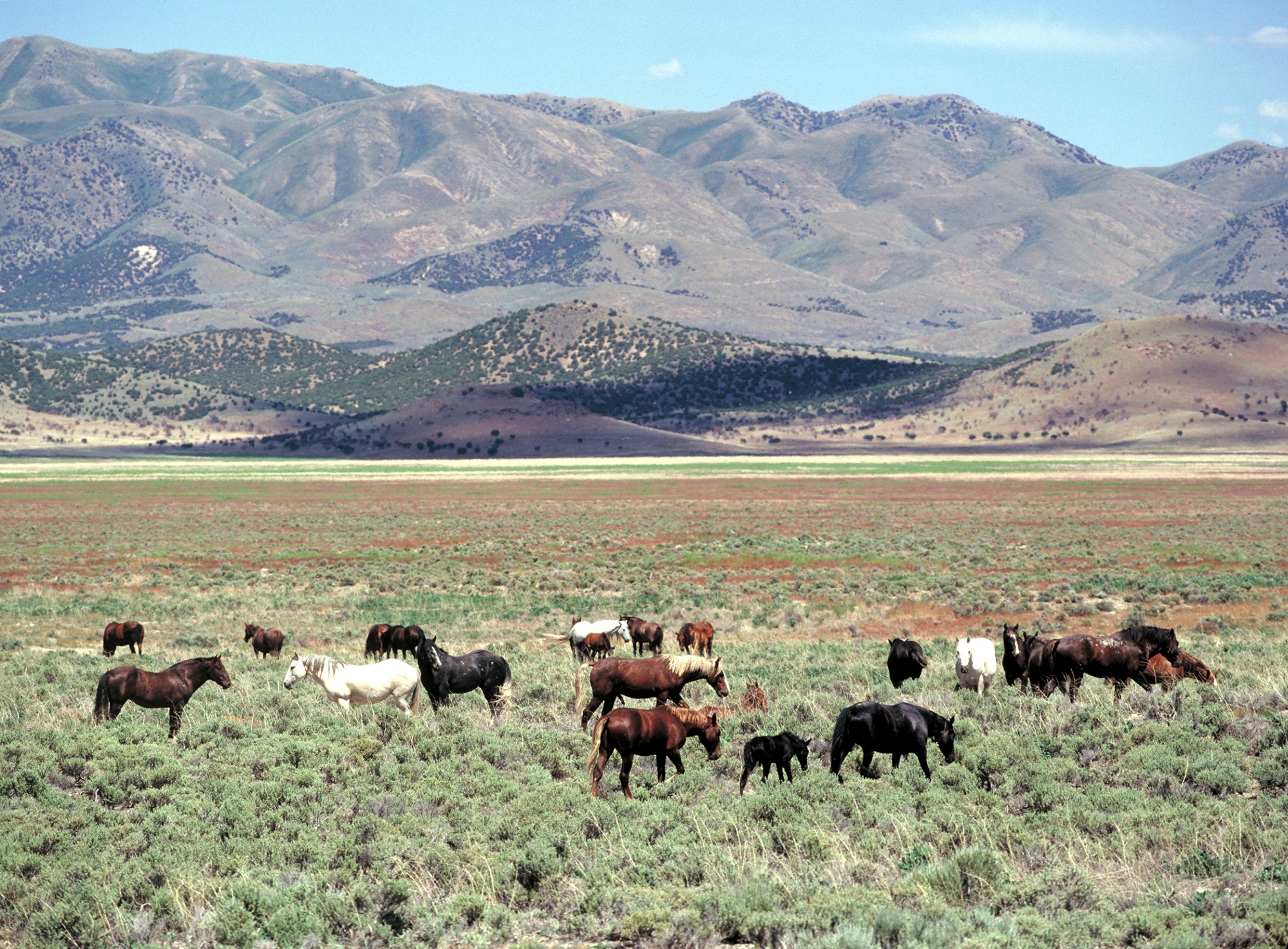A key element of the BLM’s vision is the need to balance annual herd growth rates with the number of horses or burros that can be successfully adopted each year. Over time, slowing population growth would lead to fewer animals requiring removal from the range, fewer animals in short-term corrals or long-term pastures, and decreased costs for their humane care. The BLM has the ability to manage for two key wild horse and burro population factors which influence the total number of wild horses and burros. The BLM can manage the size of the breeding population and the reproductive (growth) rate of the population.
| Fewer gathers to remove excess horses or burros would be needed if population growth rates can be reduced. |
Goal: Manage wild horse and burro populations on public lands so that healthy rangelands and animals are maintained in a thriving natural ecological balance with other multiple uses.
Objective 1: Implement fertility control and other population control measures to balance annual herd growth rates with the adoption demand period.
Actions:
Increase the use of PZP fertility control, implement sex ratio adjustments which favor males over females, or introduce or retain biologically sterile male mules to reduce the number of females foaling on the range.
Implement fertility control for stallions (castration and vasectomy).
Spay mares (ovariectomy), once techniques are proven to be safe.
Research use of chemical sterilization or other chemical control methods for mares and stallions.
Establish non-reproducing populations in Herd Areas (HAs)/HMAs, or incorporate a non-reproducing component in a number of HMAs, while maintaining the remainder of the herd as a self-sustaining (reproductive) population.
Objective 2: Make additional forage available for wild horse and burro use.
Actions:
Enter into agreements with livestock operators to trade livestock use areas for wild horse and burro use.
Voluntary relinquishment of livestock grazing permits.
Third party purchase of grazing permits for use by wild horses and burros.
Objective 3: Improve gather efficiency and expand the use of various gather techniques.
Actions:
Implement passive capture techniques (i.e., water or bait trapping) where feasible.
Increase the number and type of local and national gather contracts, including consideration of stewardship contracts, assistance agreements, volunteer agreements, or other types of partnership agreements.
Develop in-house gather capabilities.
